Diagnosed at 6 Months
Ziler
Story Written by Mother
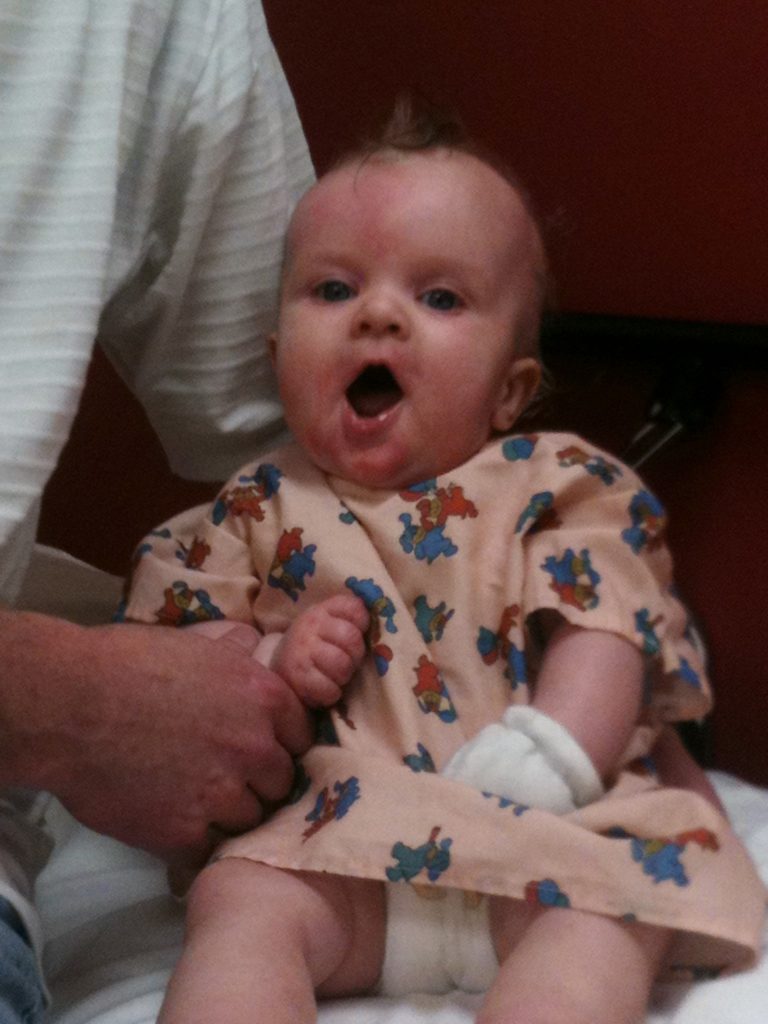
The night she was diagnosed. In the ER while waiting to be transported to WVU
My pregnancy was a very healthy one, I got plenty of exercise, ate well and had wonderful prenatal care. This was my first pregnancy and I wanted to do everything right.
Ziler was born at 37 weeks when my blood pressure started to become elevated and the doctor decided to induce labor. The delivery went well and she was a healthy baby at 7lb 8 oz. Over the first few months I noticed she was not using her right hand as much as her left and she hated tummy time. She would just scream at times when she was on her stomach. We noticed her head was slightly large but nothing that concerned us. There were little things like some clothes that we had trouble getting over her head.
At her four month check up I expressed my concerns about her hand and tummy time to the pediatrician who assured me there was no reason to be concerned. At her six month check up she was still not using her right hand well and still had difficultly with tummy time. In addition, she could not sit independently. The physician suggested we come back in six weeks to monitor for developmental delay because she could not sit up. We asked if this could be because of her head size. That is when she decided to refer her for a CT.
The CT was scheduled for the following Friday which was three days away. I was very nervous about allowing my baby to undergo a CT. We were told after the scan that we would likely not hear anything until the following Monday. Two hours later I received a call telling me to take her to the Emergency Room because she had a cyst half the size of her brain. I was holding her in my lap at the time and I was very confused. Here was my seemingly healthy baby and I did not see how it was possible she could have something wrong with her brain.
We were allowed to view the CT which revealed that nearly the entire left hemisphere of her brain was full of fluid. After six hours in the ER we were transferred by ambulance to West Virginia University – Medicine Children’s Hospital. The weekend was spent just waiting for an MRI on Monday. The neurosurgeon met with us Monday evening and explained more about Hydrocephalus and he explained about shunts and about a procedure called Endoscopic Third Ventriculostomy (ETV), a procedure used to create an opening in the floor of the third ventricle using an endoscope which allows the cerebrospinal fluid to bypass the obstruction. He told us that her hydrocephalus was because of Aqueductal Stenosis and she was a candidate for the ETV procedure.
She had the procedure the next day. We didn’t notice any immediate changes because she had seemed so healthy already. We were in the hospital eight days and brought her home and got her started in Birth to Three for Occupational Therapy to help with her hand movement. Two months later I noticed some drainage at her surgical site and we took her in to see the neurosurgeon. She had an infection and required a surgery. After nine days we were home again and back to normal.
Eventually she was diagnosed with right peripheral blindness and Amblyopia in her left eye as well as and Cortical Visual Impairment. She began receiving vision therapy as well. She could not sit independently until she was a year old and was not crawling and so we also started physical therapy.
At two and a half years old it was determined her ETV was not working any longer. She had her first shunt placed and a month later had her first revision. She was starting to walk when she turned three but wore an AFO brace on her leg and had lots of balance issues.
For the next year and a half she made great progress. Her walking was improving, she was attending Pre-K and loving it. In May of 2016 I started noticing some behavior changes. She was moody and would cry and ask for me and I had to come to school twice which was not typical for her. In June she began complaining of headaches and started taking very long naps. Within two weeks she started having episodes of nausea. The neurosurgeon adjusted her shunt which seemed to help at first but after just a few weeks the symptoms were back. She underwent shunt surgery on August 5, 2016. She came home and appeared to be doing well until she woke up in the middle of the night on August 26th with a massive bulge at the surgical site. We drove her three hours to the ER at WVU. She had a shunt infection and we were in the hospital the next two months with an External Ventricular Drain (EVD) in place on antibiotics trying to clear the infection.
When the infection appeared to be gone she came home but was very ill. I knew something was wrong. When she had her follow up with her neurosurgeon he listened to my concerns and he had bloodwork done which looked good. After three weeks home she started running a fever in addition to multiple other symptoms. We took her back to the hospital where they eventually found she still had an infection but not in her shunt. It was in a noncomunicating cyst. Another two month hospital stay and multiple surgeries later she finally came home but remained on the IV antibiotics for another six months. We are still in a waiting period monitoring closely for the possibility that the infection could return.
She’s had 15 brain surgeries total. She still requires lots of therapy, she continues to wear an AFO and she can’t always do what the other kids can do but she tries. She will be six next week and despite everything she has been through she is an amazingly happy little girl. She’s so warm and caring and thoughtful. She’s strong and courageous. She has had more MRI’s than I can count and she goes into MRI’s now without sedation. I could not be more proud of her and the person she is becoming.
I’m thankful for the amazing doctors, nurses and other hospital staff that we’ve met on our journey, some of which we now call friends. They have helped support us and helped us seek the answers we needed for her care. I still wonder what caused this to happen to her but I will never have the answer. All I can do now is help her get the best treatment possible and learn to live her life with hydrocephalus.
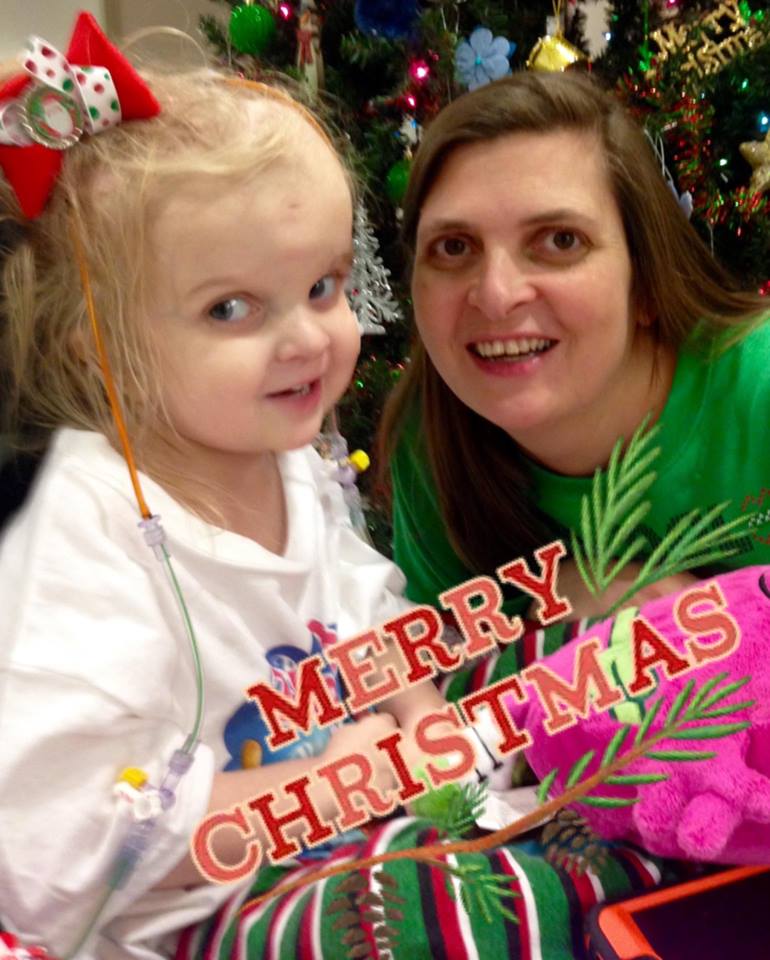

Christmas 2016 while in the hospital
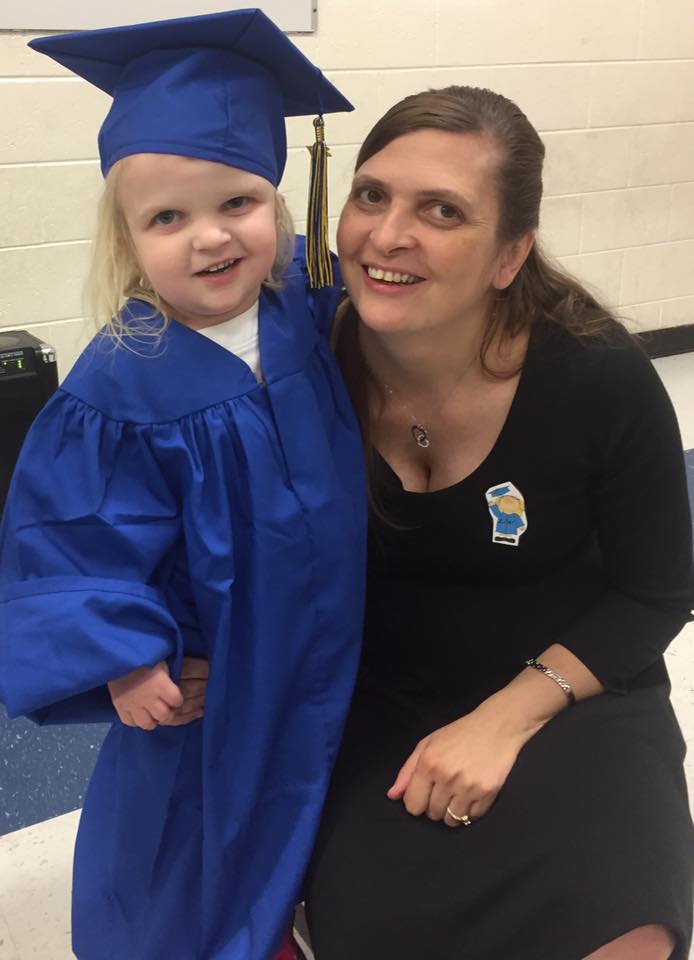

Pre-K graduation May 2017
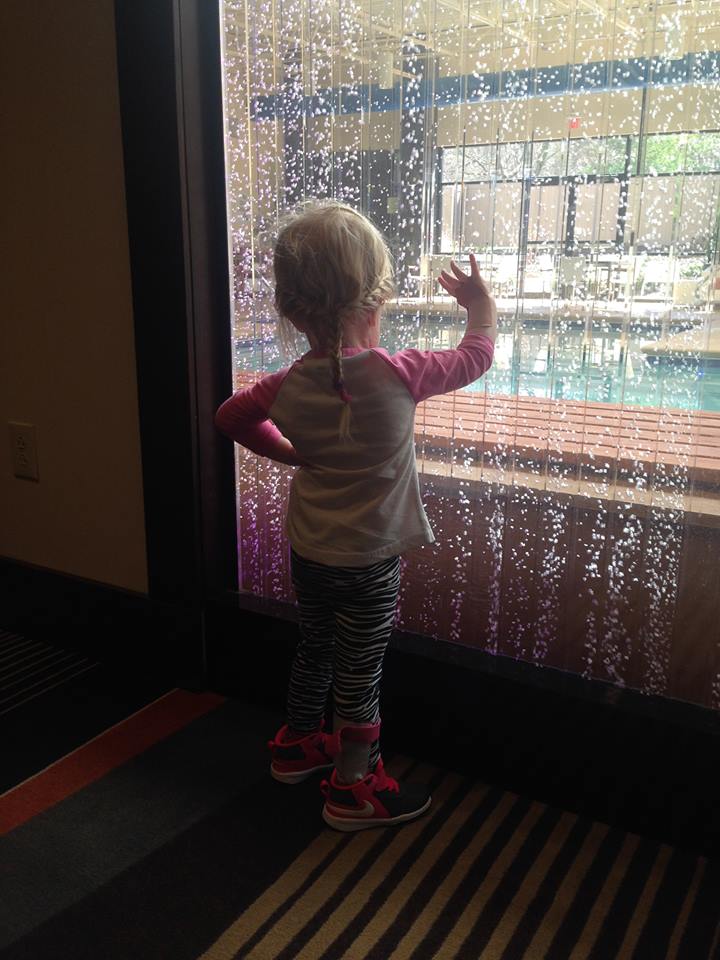

admiring a waterfall wall and holding her right hand open on her own which is a rare occurrence
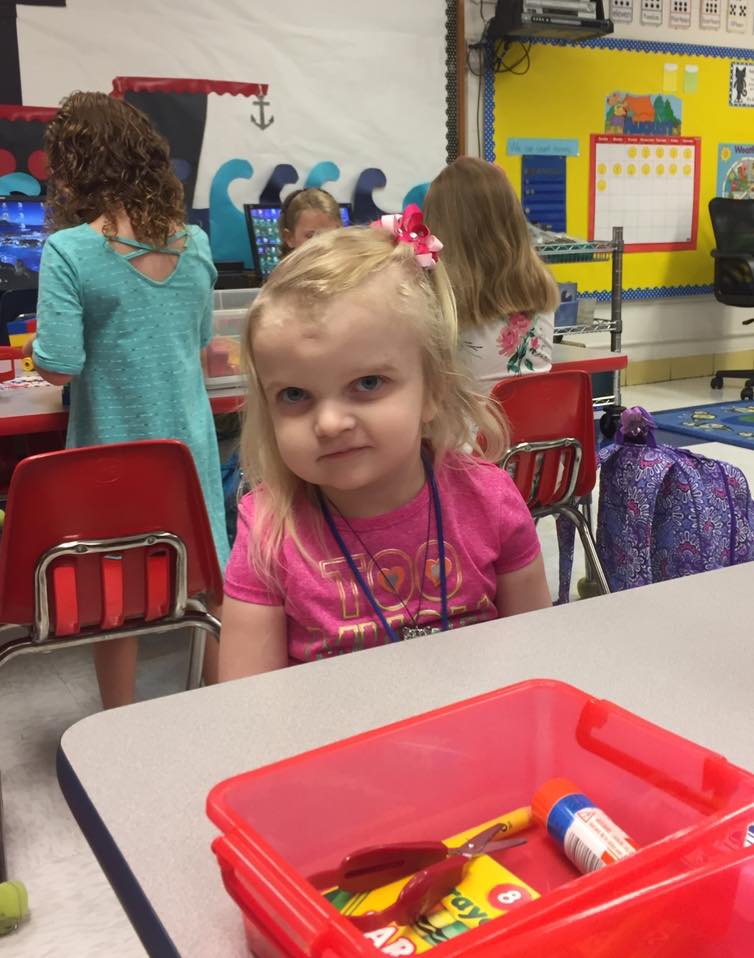

First day on Kindergarten in August 2017
Tell us about your journey with hydrocephalus!
Share your story of hope and perseverance with us! We will feature the amazing individuals in our community who are living life to the fullest regardless of their condition! Stories are reviewed by our staff and posted on our website and through social media. Stories should be no more than 800 words long. Click here to submit your story today!
Let’s SHARE. Let’s CONNECT. Let’s raise AWARENESS! Let’s INSPIRE!
For questions, email: communications@hydroassoc.org with the subject line “Share Your Story”.
Become a Grassroots Advocate for Hydrocephalus today! Visit our Advocacy Action Center.
